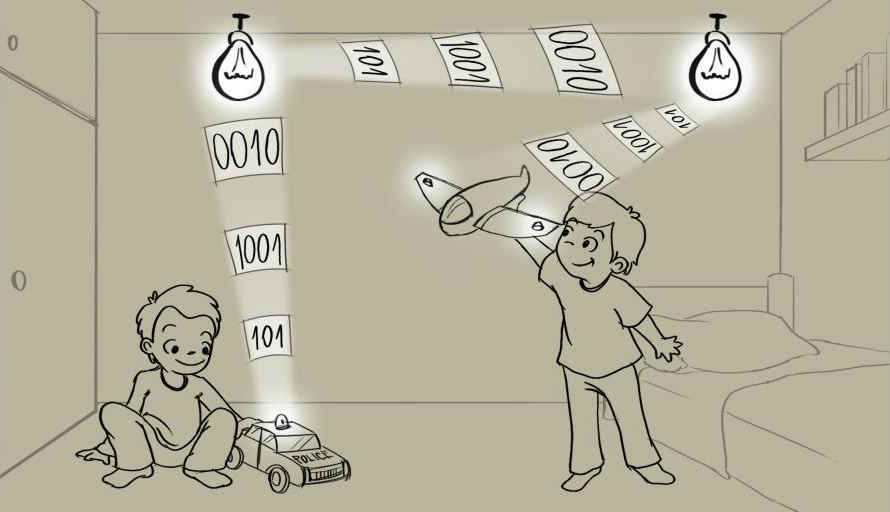
Researchers have added a TCP/IP network stack via Linux-based firmware allowing LED bulbs to communicate amongst themselves.
A team at Disney Research have been working on a new technology that will allow LED bulbs transmit and receive data. In a major step forward in the scheme of Internet of Things, consumer light bulbs might soon be able to communicate amongst themselves. Researchers are calling these nifty gadgets, Linux Light Bulbs.
Scientists have been working on technologies that allow transmission of data through light emitting diodes for a while now. It is known as Visible Light Communication (VLC) Technology. Up until now, VLC technologies supported simple communication between devices. With the Linux Light Bulbs, researchers have been able to take it a step further by enabling networking on VLC devices. They are hoping that “ LED-based light bulbs provide a cost effective path to bring VLC to every room.” It will allow for smarter indoor environments using visible light as the medium of communication.
One of the key reasons that had held back VLC technology was the absence of an internet protocol (IP) layer. Disney researchers have added an IP layer on top the VLC Medium Access Control (MAC) and Physical (PHY) layers. The IP layer will thus allow the LED bulbs to “communicate with nodes in the Internet, a necessary condition for the Internet of Things (IoT).” The paper details how a Linux-based firmware (OpenWrt) is used to implement the IP layer. An 8-bit microcontroller with an Atheros AR9331 system-on-a-chip have been used to run the firmware on a LED light bulb. The paper said, “The ubiquitous presence of LED-based light bulbs that can be enhanced with VLC functionality, and the availability of low-complex LED-equipped devices that can engage in VLC, unleashes a wide range of opportunities and applications.”
Previously, Harald Haas, a professor at the University of Edinburgh, demonstrated Li-Fi, where a video was transmitted by a table lamp through an LED bulb. The speed achieved was somewhere close to 10Mbps. Although, faster speeds with VLC technology have been achieved by others. The Linux Light Bulb on the other hand, can only achieve a measly 1Kbps, and the researchers are working to improve it.
“Communication with light enables a true Internet of Things, as consumer devices, such as toys equipped with LEDs, are transformed into interactive IP communication nodes – an interesting low-complex feature for what we refer to as the Internet of Toys,” the paper concluded.
Source: Disney Research




